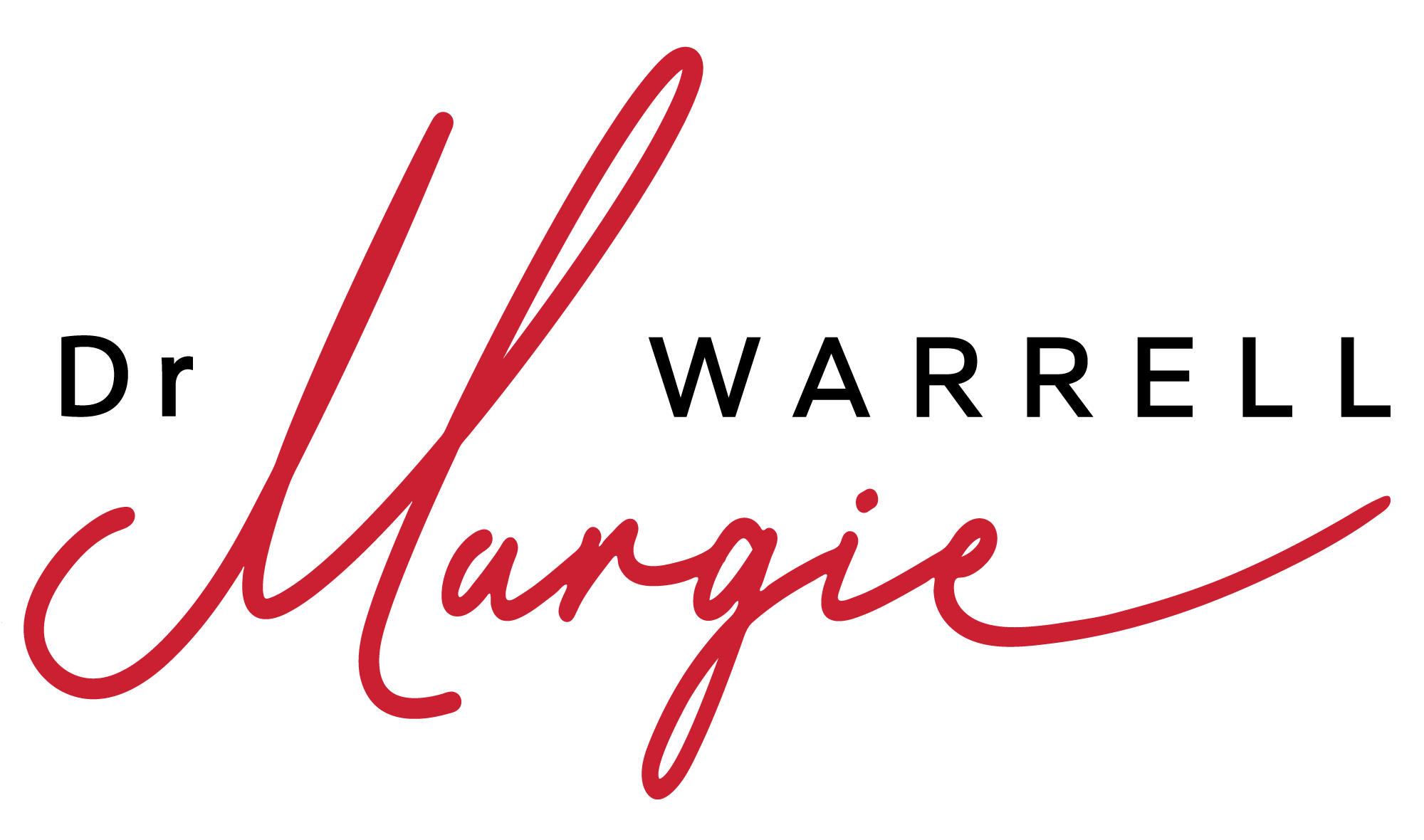I ran into a friend last weekend. Let’s call her Suzie. Suzie shared with me she was very recently passed over for a promotion that she felt she had clearly been the most well placed to get. When she found out that it had gone to a guy with far less experience than her and not half as strong a track record, she said she felt like she’d “been kicked in the stomach.” Suzie was clearly still very upset and assessing her options for the future. Leaving a large Fortune 500 company where she’d paved a relatively successful sales career for herself for the last 20+ years was a decision she had to weigh closely.
The only feedback Suzie been given was that she didn’t act “enough like a leader.” Nothing more. Which was both useless and frustrating for her. After all, she had consistenly delivered among the top sales results across her entire division for years. But when I asked her whether or not she’d asked for more clarity on what “not enough like a leader” meant, or even expressed her upset at being passed over, Suzie had said that she hadn’t. She hated to rock the boat. Which is part the problem – we women are sometimes our own worst enemy when it comes to being taken seriously as leaders. Sure, being collaborative is great. But sometimes we need to assert ourselves, we need to push back, speak up and yes, sometimes we need to rock the boat. Is
Women make great leaders. We bring strengths and perspectives that complement men and improve the outcomes of the decisions being made. We are naturally perceptive, empathetic and collaborative. But look at the number of women who’ve ascended to the top rung of the corporate ladder in the Fortune 500 corporations and you quickly see that women, despite all the progress of the last fifty years, are still the distinct minority in American boardrooms today.
This is neither good for women or for men. Research has shown that when you have more women sitting at the decision making table, it improves the bottom line results of the organizations who make them. So more women involved in the important decisions isn’t just good for women, it’s good for everyone.
There are myriad complex and intertwining reasons why women are still such a minority at the top (25% of Fortune 500 corporations don’t have any women on their boards!). One of the most obvious is that during the period of life (5-15 years post college) when men are hard at work earning their leadership stripes, women are having children. And while many women choose to combine child rearing with pursuing a career, many others elect to opt out of the demanding kids-clients-career juggling act. I don’t believe that any choice is better or worse. At least women now have a choice to make. But it does explain why, at least partially, despite the fact that women are graduating college at a rate of 3 to 2 over men, only 2% of our top companies are run by women.
At her concession speech after losing the Democratic nomination in 2008 Hilary Clinton said, “There are eighteen million cracks in the hardest of glass ceilings. Light is shining through. The path will be easier next time.” There’s no doubt about it, there have been numerous obstacles women have needed to overcome to arrive at this moment in history which has such a wealth of choice. But from where I stand, the light is well and truly shining down from above and the bigger obstacle that women face is getting out of the glass cage we unconcsiously confine ourselves to through our own thinking. Stepping into more senior leadership roles, and affecting change to the extent we are capable of will require a fundamental internal shift along three core dimensions:
- Leadership Mindset: How we define ourselves as leaders
- Leadership Capacity: What we do to build resilience for leadership
- Leadership Conversations: How assertively we share what we think and ask for what we want
Leadership Mindset | Redefine yourself as a leader
 All leadership ultimately begins with self leadership; it starts on the inside and extends outward. Just as we cannot lead others unless we a vision for where we want to take them, neither can we lead ourselves unless we have a clear sense of the direction we want to go. How you see yourself will determine how others see you. So creating a vision for yourself as a leader that encompasses the kind of impact you want to make 5 and even 25 years from now will act as a compass to guide your choices.
All leadership ultimately begins with self leadership; it starts on the inside and extends outward. Just as we cannot lead others unless we a vision for where we want to take them, neither can we lead ourselves unless we have a clear sense of the direction we want to go. How you see yourself will determine how others see you. So creating a vision for yourself as a leader that encompasses the kind of impact you want to make 5 and even 25 years from now will act as a compass to guide your choices.
Your vision doesn’t have to include a specific job or title, industry or salary (thought it might). Rather it should reflect the nature of the contribution you are inspired to make, the kind of leader (and human being) you aspire to become and the direction you want to lead others toward. After all, no one wants to follow an uncertain trumpet. But creating a vision takes courage. It requires putting yourself at risk of failure, being willing to make mistakes and becoming vulnerable to having others criticize you in the process (if not far worse.) In my travels around the globe and in my work with women in emerging and senior leadership roles, I’ve found what I believe is a universal tendency for women to doubt themselves and underestimate their own abilities. Women have to think bigger to be bigger. Beginning with the vision we hold for ourselves and extending outward to the vision we have for our team, business, organization and those whom we hope to lead. Our ability to affect positive change in the world around us begins by affecting positive change in the world within us.
Leadership Capacity | Build greater resilience
 It’s essential that we are intentional about doing things inside our control so that we can respond better to those which aren’t. Like difficult colleagues, demanding clients, sick children, corporate restructures, economic downturn, the odd natural (or unnatural) disaster, and even just the pressures inherent in getting kids to soccer practice in between conference calls and client deadlines. The higher you climb in any organization, the weightier the demands being placed upon you. And while seniority brings with it more people to whom you can delegate, the buck ultimately stops with you when it comes to delivering results. Add to that the “do more with less” pressures of an increasingly competitive global economy, the additional responsibilities of raising children, not to mention community service and other commitments outside the workplace, and it doesn’t take long for many women to feel like they are the rope in a tug-of-war, being pulled in multiple conflicting directions at once. Which is why women’s success as leaders will not be determined by their title but by their capacity to carry the extra weight of responsibility being placed on their shoulders as they climb, much of which cannot be planned for.
It’s essential that we are intentional about doing things inside our control so that we can respond better to those which aren’t. Like difficult colleagues, demanding clients, sick children, corporate restructures, economic downturn, the odd natural (or unnatural) disaster, and even just the pressures inherent in getting kids to soccer practice in between conference calls and client deadlines. The higher you climb in any organization, the weightier the demands being placed upon you. And while seniority brings with it more people to whom you can delegate, the buck ultimately stops with you when it comes to delivering results. Add to that the “do more with less” pressures of an increasingly competitive global economy, the additional responsibilities of raising children, not to mention community service and other commitments outside the workplace, and it doesn’t take long for many women to feel like they are the rope in a tug-of-war, being pulled in multiple conflicting directions at once. Which is why women’s success as leaders will not be determined by their title but by their capacity to carry the extra weight of responsibility being placed on their shoulders as they climb, much of which cannot be planned for.
Resilience for leadership isn’t something we are born with, but something we are born to build.
At the core of capacity building is resilience. Resilience psychology has found that resilience is not something you are born with, but something you are born to build. I liken it to a rubber band: if you pull and twist it out of shape it will quickly bounce back into its original (ideal) form. And so it is with us. The more resilient we are, the quicker we can bounce back from a setback into our level headed, optimistic “ideal self.” We can see things from an enlarged perspective, and are able to process our emotions so that we don’t plummet into an emotional nose dive when disappointment strikes. And we don’t get all bent out of shape, stressed out and overwhelmed when our well laid out plans collide head on with a reality that refuses to conform to them.
Four key areas for creating and bolstering your baseline resilience through building and restoring alignment are:
Physical: Think stamina, energy, health! Physical resilience give you vitality and health you need to optimize what you get done in the 24 hours you have every day and the energy you need to be fully engaged as you do it. When you exercise you not only burn off those stress hormones, but by building physical muscles you also build psychological ones. And when you choose to eat well and regularly throughout the day (keeping your glucose levels stable) with foods that nourish and fuel your hardworking mind and body, you can perform at the high level you expect of it. Note: Lattes are not a food group.
Mental: Think focus, discipline, orgnization. Mental resilience is being able to stay fully engaged and focused on the task at hand. It requires you to be clear about your priorities and mindful about what you are, and aren’t, committing to. Taking time to plan your week ahead first thing Monday morning (or on a Friday afternoon) is a valuable investment of time that will pay off with exponentially increased productivity that comes from focusing on the highest value activities and avoiding those lower value distractions.
Emotional: Think calm, confidence, optimistic. Emotional resilience is your ability to manage potentially destructive emotions that get triggered through the course of your busy day. At its foundation is emotional awareness, and from there your proficiency at shifting potentially destructive emotions, reframing your perspective and responding the situation at hand in a calm, constructive and thoughtful way.
Spiritual: Think purpose driven! Spiritual resilience speaks to your bigger sense of purpose about why you do what you do. It ties in to the vision you have for yourself as a leader, as a woman and as a human being. It enables you to see every situation through a bigger lens, find the lesson your challenges have to offer and trust in yourself more deeply to rise to meet them.
Leadership Conversations | Speak up with greater confidence, candor and courage
While women, naturally more attuned to the emotions of those around them, tend to have a head start in the EQ department, too often we allow the emotion of fear to keep us from engaging in the conversations needed to build our value, manage commitments effectively, address contentious issues and expand our network of influence.
Make bold requests: If you want something, ask for it. Don’t expect others to reward you for hard work, or to read your mind. It may never happen! Rather, get over your fear of seeming too pushy or bold and let others know what it is you would like to happen, when you would like it and what you need to do to make it happen. My clients, many of whom are in senior leadership roles, have often told me that for every young twenty-something woman that comes to them to seek career advice and discuss advancement opportunities, they are approached by three young men, who are usually much quicker to blow their own horn and ask for a promotion outright. And guess what, they get it first for no other reason than they are making the most noise and the boldest requests.
Speak the truth: If there’s something you genuinely want to say, chances are someone genuinely needs to hear it. Don’t side step difficult issues or avoid saying what’s on your mind because you loathe confrontation. While it’s important to be mindful about what we say, withholding our opinion for fear that it might be scoffed at or ruffle feathers deprives us of the opportunity to demonstrate our value and let others know that are willing to put ourselves at risk for what we believe in (an attribute we all want to see in those who lead us.) When all we do is try to fit in, we negate the difference that our difference makes. We each have unique value to add, regardless of our years in the industry, letters after our name or size of our cubicle. When we second guess it, we limit it.
As more women step beyond their doubts and fears, we will not only see more women in positions of power, but more women changing the nature of power.
Say No: Women tend to have a harder time saying no than men do. We are natural care-takers, and while some women have mastered the art of a gracious “No,” many women struggle to do so. But every time we say yes to something, it means, by default, we are saying no to something else. And often that something else is time for ourselves (and those “tune up” or “time out” activities that restore our alignment) or other non-urgent career building activities that reap rewards in the longer term. So being ultra-clear about what you most want to say yes to is pivotal to finding the clarity and courage to say no when you need to. As I wrote I my book Find Your Courage, sometimes we have to say no to the good to make room for the great. Not doing so does a disservice to everyone and puts in jeopardy your ability to add the greatest value in the longer term.
As women harness their own personal power, their potential to affect change in the world is vast. But harnessing the full quota of our power will demand a commitment to stepping courageously through the glass cage of beliefs, doubts and fears that may be limiting our leadership potential and impact. As more women raise the bar for themselves we will witness powerful changes emanating from the top in business, government, and public life. Women like Oprah and Hilary Clinton and Condoleeza Rice will no longer be such anomalies. As more women step up and arrive at the top rungs of power around the globe, we will see that women will not be changed by power, but will change the nature of it. And that won’t just be good for women in Fortune 500 corporations, it will be good for women, and for the men we share our lives with, the world over.
Yes, women make great leaders. And I look forward to the day when young girls across the globe will not only have the choice and opportunity to become the President, or Prime Minister, or CEO, but that they actually will be. And one day, says this recalcitrant daughter of a former nun, maybe even Pope!
Alleluia!
Here’s to rocking boats, when boats need rocking!






